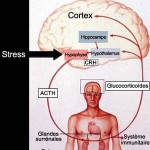Monday, 20 October 2014
Reading Novels Increases Connectivity of Areas in the Brain

Immersing yourself in reading a good novel is an excellent way to take a break from the stresses of daily life. By seeing things from the protagonists’ point of view while you are reading those few hundred pages, not only do you feel as if you have access to another world, but you may also continue to have this feeling for some time, or even for your entire life, if the book has really made an impression on you.
The neurobiological bases of this phenomenon would appear to have been discovered in a study that Gregory S. Berns and his colleagues published in the journal Brain Connectivity in Fall 2013. The subjects in this study were 21 young adults. In the first phase of the study, the subjects received resting-state functional magnetic resonance imaging (fMRI) scans for five consecutive days. The researchers then used these scans to develop a general diagram of the connectivity of each subject’s brain. (more…)
Memory and the Brain | Comments Closed
Monday, 6 October 2014
Poverty Imposes a Cognitive Burden on the Brain

Neuroscience is providing growing evidence that poverty can have serious consequences not only for the health of people who are “struggling to make both ends meet” (something that has been known for a long time), but also on their cognitive abilities. The most recent of these studies looking specifically at this aspect of poverty was published in the journal Science in August 2013 by economist Anandi Mani and her colleagues.
Using two different approaches, this research team reached the same conclusion: for people at the low end of the socioeconomic spectrum, everyday life requires so much calculation and effort just to meet basic material needs (food, shelter, etc.) that it exhausts their mental capacities. (more…)
From Thought to Language | Comments Closed
Monday, 15 September 2014
The Intelligence in Our Hands

The first crisp days of autumn are great for outdoor chores like chopping firewood, installing storm windows, and raking leaves. Distracted by the blazing fall foliage, you may sometimes find yourself performing complex tasks with your hands while your mind is clearly off somewhere else. It’s as if your hands had “a mind of their own.”
But this mental aspect of manual work is not just a passing impression you may have; it’s also one of the hottest topics in cognitive science today. MIT Press has just published The Hand, an Organ of the Mind: What the Manual Tells the Mental. This collection of essays, edited by philosophy professor Zdravko Radman, examines the intimate connection between the hands and the mind not only from the neurophysiological and evolutionary angle, but from the philosophical, cultural and esthetic perspectives as well. (more…)
Body Movement and the Brain | Comments Closed
Tuesday, 2 September 2014
Nervous and Immune Systems Closely Tied
 By the late 20th century, cognitive neuroscientists had recognized that they would never truly understand how the brain functions unless they also considered the body in which it does so. This concept of “embodied” cognition implies that the brain constantly maintains a dynamic relationship with the rest of the body, which in turn is totally immersed in its physical and social environment. This model contrasts sharply with others that compare the brain to a computer or treat it as a disembodied organ that simply manipulates symbolic representations of inputs to provide appropriate outputs. (more…)
By the late 20th century, cognitive neuroscientists had recognized that they would never truly understand how the brain functions unless they also considered the body in which it does so. This concept of “embodied” cognition implies that the brain constantly maintains a dynamic relationship with the rest of the body, which in turn is totally immersed in its physical and social environment. This model contrasts sharply with others that compare the brain to a computer or treat it as a disembodied organ that simply manipulates symbolic representations of inputs to provide appropriate outputs. (more…)
Mental Disorders | Comments Closed
Monday, 18 August 2014
The myth of left-brained and right-brained personalities

One often reads that certain functions of the human brain are lateralized—for example, that the left hemisphere is more involved in language and the right in the processing of visuospatial information. One also often hears it said that some people are left-brained (meaning that they are analytical, logical, and focused on details) while others are right-brained (more subjective and creative, with more of a tendency to see things as a whole).
But according to a study published on August 14, 2013 in the online journal PLOS ONE, although there is abundant evidence for the lateralization of certain brain functions, the idea of left-brained and right-brained personalities is simply a myth. (more…)
From Thought to Language | Comments Closed







